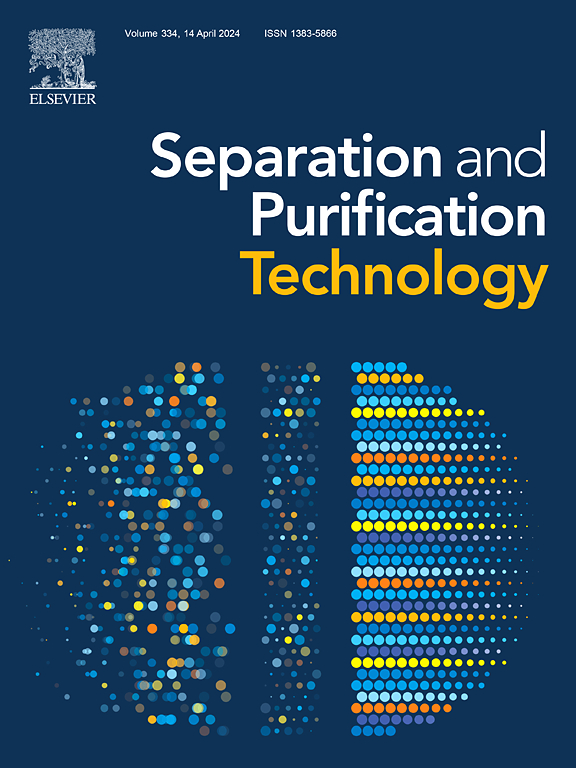CF4 removal using liquid Sn alloy: Thermodynamic alloy design and experimental validation
IF 8.1
1区 工程技术
Q1 ENGINEERING, CHEMICAL
引用次数: 0
Abstract
The tight emission control of fluorinated gases such as PFCs, NF3, and SF6, extensively used in the semiconductor manufacturing process, is critical for reducing greenhouse gases and mitigating global warming. This study employed liquid Sn alloy to remove CF4 gas, known for its strong bond energy among F-gases. Thermodynamic calculations were conducted with FactSage thermodynamic databases to design the most effective binary Sn alloy systems: Sn-Mg and Sn-Ca alloys. Through the bubble column apparatus, the N2-CF4 gas was bubbled into the selected liquid Sn alloys at 600 to 800 ℃, and outlet gas was analyzed using gas chromatography. The removal efficiency of CF4 increased with temperature and concentration of reactive metal such as Mg and Ca. The efficiency of liquid Sn-Mg alloy was higher than that of liquid Sn-Ca alloy. More than 99 % removal of CF4 gas was successfully obtained using liquid Sn-40 at.% Mg alloy at 800 ℃ by forming MgF2 phase. The present study demonstrates that this novel approach using liquid Sn alloy can remove F-gases efficiently.求助全文
约1分钟内获得全文
求助全文
来源期刊

Separation and Purification Technology
工程技术-工程:化工
CiteScore
14.00
自引率
12.80%
发文量
2347
审稿时长
43 days
期刊介绍:
Separation and Purification Technology is a premier journal committed to sharing innovative methods for separation and purification in chemical and environmental engineering, encompassing both homogeneous solutions and heterogeneous mixtures. Our scope includes the separation and/or purification of liquids, vapors, and gases, as well as carbon capture and separation techniques. However, it's important to note that methods solely intended for analytical purposes are not within the scope of the journal. Additionally, disciplines such as soil science, polymer science, and metallurgy fall outside the purview of Separation and Purification Technology. Join us in advancing the field of separation and purification methods for sustainable solutions in chemical and environmental engineering.
 求助内容:
求助内容: 应助结果提醒方式:
应助结果提醒方式:


